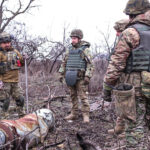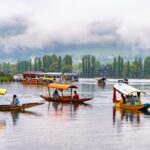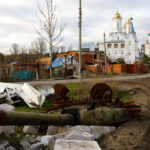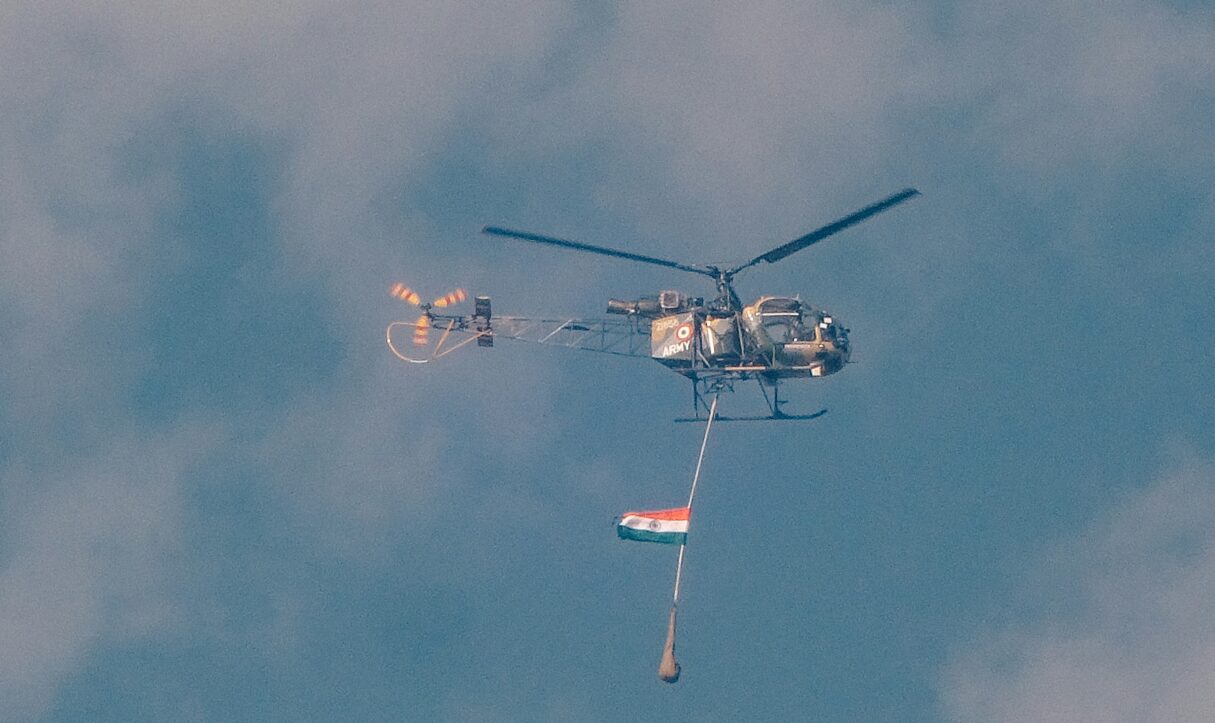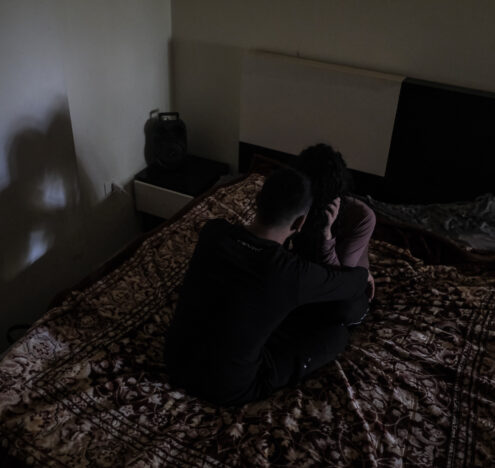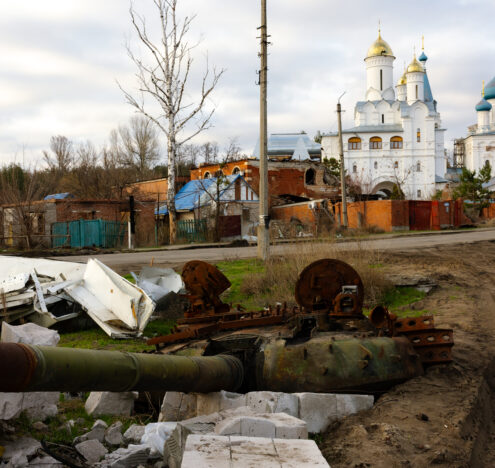The night before India and Pakistan reached a ceasefire, 30-year-old Ayushi Malik heard what she and her family knew was the loudest sound they’d ever heard in Jammu city. The fighting had erupted quickly, and the ceasefire stopped what could have spiraled into South Asia’s first nuclear confrontation. “It shook our entire house,” she recalled, explaining that shelling had hit four homes in nearby Rehari. “That’s just two kilometers away. That’s when we thought we might need to evacuate.”
What began as another skirmish between India and Pakistan, two long-time South Asian rivals, quickly turned into a full-fledged exchange of drone swarms, precision strikes, and missile fire across one of the world’s most militarized borders. Between May 7 and May 10, Islamabad and New Delhi launched tit-for-tat attacks that jolted civilians, sparked international concern, and revived memories of past wars — including those the countries fought over Jammu and Kashmir, the region both countries claim in full but only control in parts.
Drones, in particular, emerged as a defining feature of this confrontation. Both militaries deployed them in unprecedented numbers. That wasn’t a complete surprise — drones have rapidly become central to regional military strategy in the ongoing disputes between India and Pakistan, a fact that has underscored the evolving nature of modern warfare in South Asia.
*
Still, the recent fighting carried a darker potential. Both Islamabad and New Delhi have nuclear weapons, though they’ve narrowly avoided their use in past military flare-ups. As the countries lobbed missiles at one another and reports emerged of strikes on major military installations, international observers warned that this latest confrontation could put an end to long-standing deterrence doctrines and make fears of nuclear war a reality.
The ceasefire announcement came just hours after civilians began packing go-bags and evacuating their homes in areas throughout multiple districts along the border. The United States soon claimed that it had mediated the ceasefire following a night of high-level shuttle diplomacy between Washington, New Delhi, and Islamabad.
US President Donald Trump initially announced the ceasefire on his Truth Social platform. “After a long night of talks mediated by the United States, I am pleased to announce that India and Pakistan have agreed to a full and immediate cease-fire,” he wrote. Congratulations to both countries on using common sense and great intelligence. Thank you for your attention to this matter!”
Back in Jammu, locals like Ayushi Malik said the ceasefire came just in time. “I had my parents and younger brother with me, who is unwell,” she explained. “We planned to leave the city. Every night before that, we were staying away from the gas cylinder and keeping first aid kits close. We had no idea if our home would be next.”
*
The spark for the latest round of fighting came on April 22, when a militant group carried out a deadly attack on a group of tourists in Pahalgam, a scenic tourism destination located in the Indian-administered Kashmir Valley. The assault killed at least 26 people, all but one of whom were tourists. The Indian government swiftly accused Pakistan’s “deep state” of orchestrating the attack, an allegation Islamabad vehemently denied.
A series of calibrated but fast-escalating military responses soon followed. India launched Operation Sindoor in the early hours of May 7, targeting what it insisted were terror camps in Pakistan and Pakistan-administered Kashmir. In turn, Pakistan fired missiles and launched drone attacks, leading to three consecutive nights of fierce explosions, blackouts, and widespread panic on both sides of the border.
By May 10, according to official statements from both sides, attacks had hit or targeted more than two dozen urban centers, including Udhampur, Pathankot, and Buj in India, and the Nur Khan Airbase in Pakistan.
*
For those like Ayushi, who live in areas the attacks targeted, the experience was terrifying. As the violence escalated, local markets began to close around five in the afternoon, and residents returned home to stay indoors. “We saw red flares, drones being intercepted,” she said of the nights of May 8 and May 9. “Electricity would come and go, but the explosions never stopped.
When sirens began to howl again at dawn on May 10, Ayushi and her family rushed to gather necessary belongings and flee. “They were still bombarding [the area] ‘til 10 or 11 am,” she said. “We heard code-red alerts to take shelter.”
The fear she and her family felt wasn’t without good reason. The Indian government has accused Pakistan of targeting civilian infrastructure, including schools and medical centers, while Pakistan has alleged that India’s “unprovoked aggression” killed at least 40 civilians, including a child, and injured more than 50 others.
*
India and Pakistan have fought three major wars — in 1947-1948, 1965, and 1971 — and a limited conflict in Kargil in 1999. All but one of those wars directly stemmed from the dispute over Kashmir. It is a Muslim-majority region that the partition of British India divided between the two newly born countries. Until today, both Pakistan and India claim the region in full, and Kashmir remains a heavily militarized flashpoint.
In 2019, a suicide bombing in Pulwama killed 40 Indian paramilitary personnel, leading to Indian strikes on Balakot in Pakistan’s Khyber Pakhtunkhwa province. Pakistan said it suffered no damage in the attack. That incident brought the two nuclear-armed neighbors to the brink of war, but this year’s confrontation marked a significant shift in the way the countries fight one another.
“This was the first time both sides deployed drone swarms, advanced missiles, and cyber countermeasures on this scale,” said an Indian defense expert and retired officer who goes by Brigadier (Retd) Shuvendu.
The way he saw it, India had convincingly and quickly achieved its military objectives, pointing to Indian strikes on airfields in Pakistani areas like Rahim Yar Khan and Muridke. “We struck terrorist targets,” he said, later adding: “They were in no position to continue. Pakistan requested a ceasefire.”
*
India, in the retired brigadier’s words, agreed to de-escalate but underlined that the truce is conditional. “If there is any future terror attack,” he argued, “we reserve the right to respond with force.”
Shuvendu described the confrontation as part of a new generation of warfare. “Like we have seen between Russia and Ukraine and Israel and Hamas, drones — low-cost, high-volume — are used to overwhelm systems and create panic,” he said. “We intercepted most of theirs. Our systems, like Akash missiles and anti-drone networks, proved superior.”
Still, he cautioned that the crisis is far from over and accused Pakistan of already violating the ceasefire. “India is on alert,” he said. “Operation Sindoor isn’t over.”
*
Across the border, the perception is markedly different. South Asia observer Saqib Tanveer, who is the editor of The Independent Urdu, said that the majority in Pakistan viewed the conflict as a rare military and diplomatic success. “The Indian strikes damaged some infrastructure, but it was mostly symbolic,” he said. “The idea that terrorists train in well-known mosques and seminaries is implausible. That’s why Pakistan’s military invited international journalists to inspect those sites hours after the attacks.”
The turning point came when India allegedly targeted the Nur Khan airbase near Islamabad on May 9 and 10. “That forced Pakistan’s hand,” he argued. “There wasn’t a formal response earlier, but once Pakistan retaliated by targeting Indian military locations — a fact acknowledged by India – it shifted the momentum.”
I hope that both countries resolve differences among them, and we don’t have to deal with this kind of situation ever again.
Tanveer pointed out that Pakistan’s use of Chinese-supplied fighter jets and Turkish drones, alongside the downing of at least one Rafale fighter, gave the domestic impression of military parity. For Pakistan, “1948, 1965, and Kargil ended inconclusively,” he said, explaining that 1971 was a defeat, while the Balakot incident remains debatable. “But 2025, for many in Pakistan, feels like an undisputed victory — both militarily and diplomatically.”
*
For his part, Tanveer said many in Pakistan saw the conflict as an undeniable shift. “For years, India insisted it would only talk about terrorism with Pakistan, not Kashmir,” he explained. “But during this crisis, even Prime Minister Modi publicly mentioned ‘Pakistani Kashmir.’ That opens the door to bilateral or even international dialogue.”
The contrasting narratives from New Delhi and Islamabad reflect a broader battle over both domestic and international perception, one about who emerged stronger from the four-day conflict. While Pakistan framed the ceasefire as a diplomatic and military win, India maintained that it had achieved its objectives and retained the right to respond to future threats.
Yet, as both sides claimed success, attention also began to shift to the role of external actors, particularly the US, and how their involvement could reshape long-standing positions on regional diplomacy.
While the world welcomed the ceasefire, Trump’s claim that the US had mediated the agreement and his broader remarks suggesting potential discussions on Kashmir raised questions about India’s long-standing policy of opposing third-party involvement in its bilateral disputes with Pakistan.
*
New Delhi has historically rejected external mediation on Kashmir, insisting the issue requires only bilateral negotiations. Trump’s framing of the ceasefire as a US-brokered outcome puts that stance under pressure, especially as international conversation begins to revive the Kashmir question in diplomatic forums.
Ceasefire or not, those living closest to the conflict worry less about diplomacy and more about their survival. In Kashmir, generations have survived cycles of violence and political stalemates. The pause in fighting brought them a fragile sense of relief, but they’re still grappling with a familiar anxiety about what might come next.
“We have always lived an uncertain life, but during this clash the entire valley seemed closer to death, but at least this ceasefire provides us temporary relief,” said Adnan Ahmed, a 27-year-old resident of Srinagar, the capital of Indian-administered Kashmir. “I hope that both countries resolve differences among them, and we don’t have to deal with this kind of situation ever again.”



